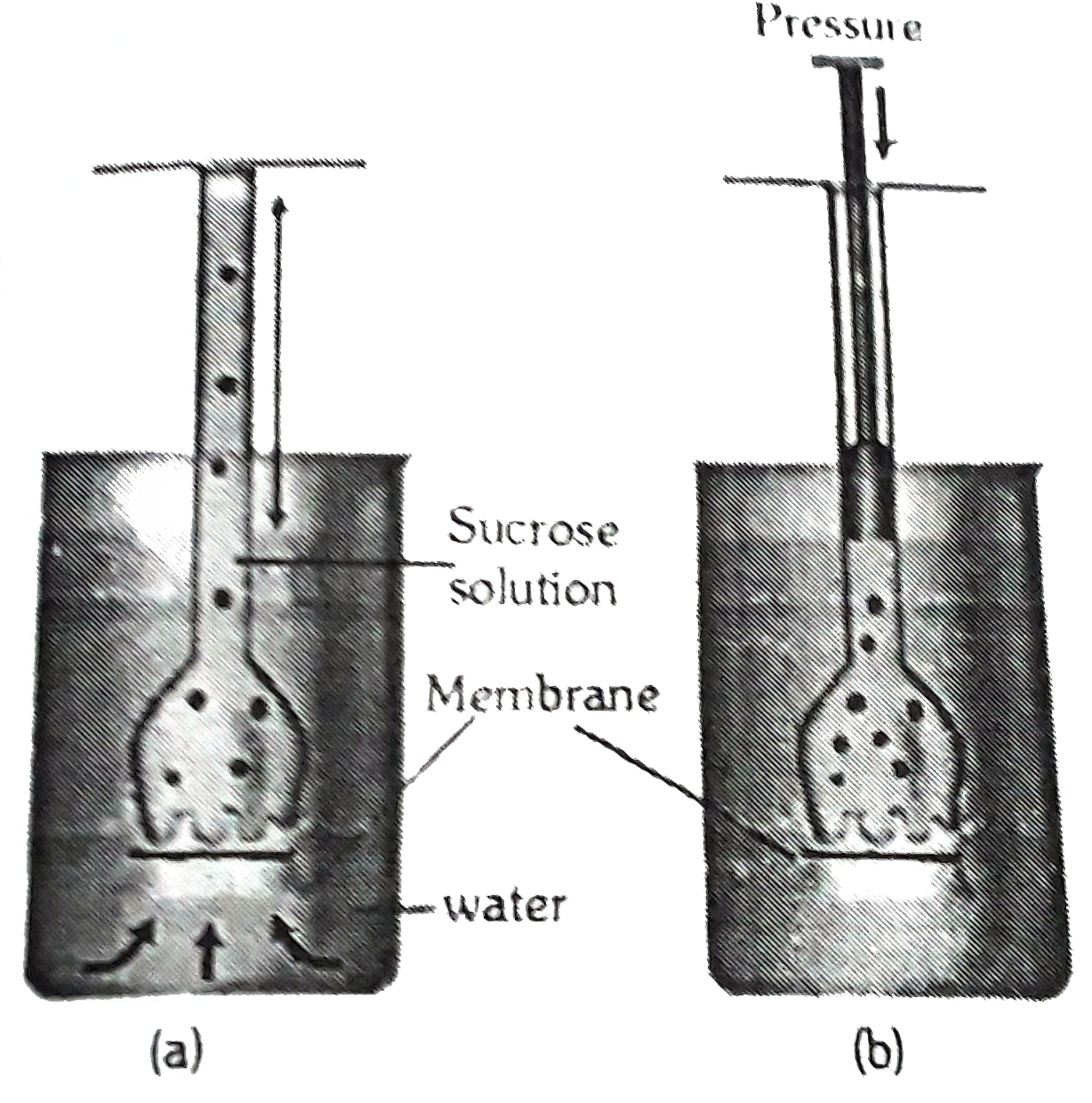Describe the process/ mechanism of plant cell plasmolysis with example and labelled diagram.Solution in Gujrati
There are three types of solution: Isotonic solution, Hypotonic solution, Hypertonic solution.
Explanation :
The behaviour of the plant cells with regard to water movement depends on the surrounding solution.
If the external solution balances the osmotic pressure of the cytoplasm, it is said to be isotonic.
If the external solution is more dilute than the cytoplasm, it is hypotonic solution.
Or the concentration of a solution is less compared to other solution is called Hypotonic solution.
If the external solution is more concentrated, it is hypertonic solution.
Cells swell in hypotonic solutions and shrink in hypertonic solution.

Plasmolysis occurs when water moves out of the cell and the cell membrane of a plant cell shrinks away from its cell wall.
This occurs when the live cell of tissue is placed in a solution that is hypertonic to the protoplasm.
When water moves out, it is lost from the cytoplasm and then from the vacuole.
Topper's Solved these Questions
- BOOK - KUMAR PRAKASHANCHAPTER - TRANSPORT IN PLANTS EXERCISE - Section-B Difference/Scientific Reasons6videos
TRANSPORT IN PLANTS
- BOOK - KUMAR PRAKASHANCHAPTER - TRANSPORT IN PLANTS EXERCISE - Section-C Definition/Explanation-terms/Location-Function25videos
TRANSPORT IN PLANTS
- BOOK - KUMAR PRAKASHANCHAPTER - THE LIVING WORLDEXERCISE - OBJECTIVE SECTION (FILL IN BLANKS)9videos
THE LIVING WORLD
Similar Questions

Study the given figure carefully and select the true and false statement(s) in this demonstration.
(a) Numerically this external pressure in figure (b) is equivalent to the osmotic potential of a solution, but the sign is opposite.
(b) Osmotic pressure is due to the solute concentration.05:05View SolutionDefine : Diffusion.
07:06View SolutionA .......... is a collection of pressed, dried and preserved plants mounted on ……..
03:58View Solution(a) With the help of well-labelled diagrams, describe the process of plasmolysis in plants, giving appropriate examples. (b) Explain what will happen to a plant cell if it is kept in a solution having higher water potential.
04:49View Solution(a) With the help of well-labelled diagrams, describe the process of plasmolysis in plants, giving appropriate examples.
(b) Explain what will happen to a plant cell if it is kept in a solution having higher water potential.03:53View SolutionWith the help of well-labelled diagrams, describe the process of plasmolysis in plants, giving appropriate examples.
05:33View SolutionGive an overview of the plasmolysis method of plants with appropriate examples and marked diagrams.
05:19View Solution(a) With the help of well-labelled diagrams, describe the process of plasmolysis in plants, giving appropriate examples. (b) Explain what will happen to a plant cell if it is kept in a solution having higher water potential.
04:25View Solution(a) With the help of well-labelled diagrams, describe the process of plasmolysis in plants, giving appropriate examples. (b) Explain what will happen to a plant cell if it is kept in a solution having higher water potential.
02:41View Solution(a) With the help of well-labelled diagrams, describe the process of plasmolysis in plants, giving appropriate examples. (b) Explain what will happen to a plant cell if it is kept in a solution having higher water potential.
03:10View SolutionWith the help of well-labeled diagrams. Describe the process of plasmolysis in plants, giving appropriate examples.
03:34View SolutionWith the help of well-labelled diagrams, describe the process of plasmolysis in plants, giving appropriate examples.
View SolutionWith the help of a neat and labeled diagram describe the guard cells in monocot and dicot plants.
03:30View SolutionDescribe plant cell wall with well labelled diagram.
04:22View SolutionDescribe the process of spermatogenesis with labelled diagram.
View Solution

